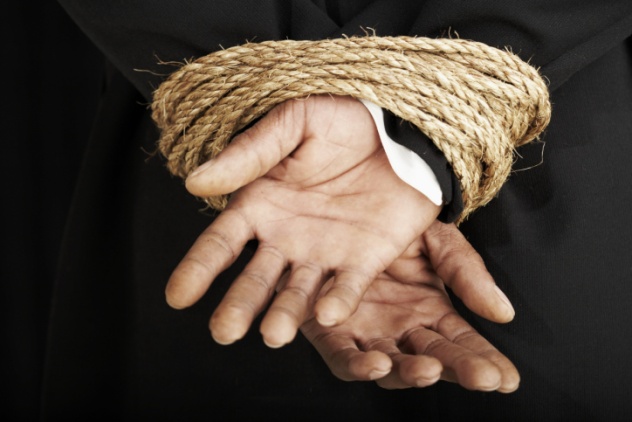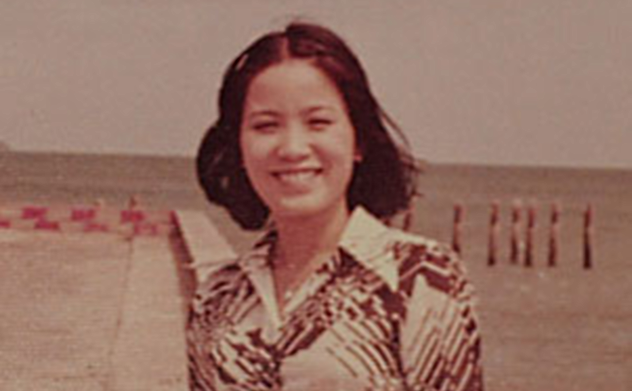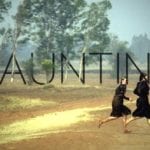 Animals
Animals  Animals
Animals  Weird Stuff
Weird Stuff 10 Weird Things People Used to Do at New Year’s
 Our World
Our World 10 Archaeological Discoveries of 2025 That Refined History
 Weird Stuff
Weird Stuff 10 Fascinating Facts You Might Not Know About Snow
 Miscellaneous
Miscellaneous Top 10 Things Crypto Was Supposed to Change & What Actually Did
 History
History 10 Huge Historical Events That Happened on Christmas Eve
 Music
Music 10 Surprising Origin Stories of Your Favorite Holiday Songs
 History
History 10 Less Than Jolly Events That Occurred on December 25
 Weird Stuff
Weird Stuff 10 Funny Ways That Researchers Overthink Christmas
 Politics
Politics 10 Political Scandals That Sent Crowds Into the Streets
 Animals
Animals 10 Species That Refused to Go Extinct
 Weird Stuff
Weird Stuff 10 Weird Things People Used to Do at New Year’s
 Our World
Our World 10 Archaeological Discoveries of 2025 That Refined History
Who's Behind Listverse?

Jamie Frater
Head Editor
Jamie founded Listverse due to an insatiable desire to share fascinating, obscure, and bizarre facts. He has been a guest speaker on numerous national radio and television stations and is a five time published author.
More About Us Weird Stuff
Weird Stuff 10 Fascinating Facts You Might Not Know About Snow
 Miscellaneous
Miscellaneous Top 10 Things Crypto Was Supposed to Change & What Actually Did
 History
History 10 Huge Historical Events That Happened on Christmas Eve
 Music
Music 10 Surprising Origin Stories of Your Favorite Holiday Songs
 History
History 10 Less Than Jolly Events That Occurred on December 25
 Weird Stuff
Weird Stuff 10 Funny Ways That Researchers Overthink Christmas
 Politics
Politics 10 Political Scandals That Sent Crowds Into the Streets
10 Cases Of Missing People Allegedly Abducted By North Korea
North Korea is arguably one of the most repressive and secretive countries in the world. Its ruling family, the Kims, have held power over the country since 1948. North Korea’s many bizarre antics, from having an official hairline policy to declaring former leader Kim Jong Il capable of controlling the weather, often make headlines in Western media.
North Korea’s international kidnapping operations in the 1970s and 1980s, however, are little-known outside of Japan and South Korea. Both countries consider it to be a major issue. The Japanese government officially recognizes 17 missing citizens as North Korean abductees, although some allege there might be hundreds more. In 2002, after decades of denial, North Korea admitted to kidnapping 13 Japanese citizens and returned five of them to Japan. Thousands of South Koreans have also been abducted by North Korea, including high school students and fishermen. The abductions weren’t just limited to Japan and South Korea, either.
10 Yaeko Taguchi
Yaeko Taguchi, a 22-year-old single mother, was last seen on June 12, 1978, dropping off her young son and daughter at their usual day care in Tokyo. She never came back to pick them up that evening and never showed up to her hostess job at the Cabaret Hollywood, either. Nobody could say whether she had been abducted or simply walked off. Her son ended up being adopted by Taguchi’s brother and his wife, and her daughter was adopted by a different couple. Taguchi’s brother brought her son up as his own and planned not to tell him the truth about his real parents until he was an adult.
In 1987, however, the case took a dramatically bizarre turn when a North Korean spy named Kim Hyun Hui was arrested after posing as a Japanese citizen in order to board a South Korean plane. Hui planted a bomb onboard and then left. The bomb exploded while the plane was in midair, killing all 115 people on it. Hui admitted to the authorities that she was the bomber, but she also claimed that she was trained by Yaeko Taguchi.
After further investigation, it was found that North Korean secret agents had been monitoring the Cabaret Hollywood back when Taguchi worked there. She was abducted and taken to North Korea by boat, where it’s thought that she was forced to teach spies how to act like Japanese citizens. The North Korean government claims that she was killed in a car accident in 1986, but former abductees insist that she’s still alive, anxious to go home and often in tears because she misses her children so much.
9 Yutaka Kume

Of the 17 people officially recognized by the Japanese government as having been kidnapped by North Korean agents, Yutaka Kume’s disappearance is the earliest, and he is probably the least likely of the official victims to still be alive today. Kume was a 52-year-old security guard who worked at Tokyo’s Mitaka city hall. He was last seen on September 19, 1977, on a beach in Japan’s Ishikawa Prefecture. Around the time of Kume’s disappearance, a Korean had been arrested in the area on suspicion of smuggling Japanese people from Ushitsu Bay to Korea. A local newspaper published an article in November suggesting that Kume might have defected to North Korea on a secret ship.
As the years went by, after more and more Japanese citizens were rumored to have been abducted, Kume’s disappearance was no longer considered voluntary. Japanese authorities now believe that he was kidnapped by a spy named Kim Se Ho, a North Korean man who was in Japan in 1977 on official business for a trade mission. The Metropolitan Police Department and the Ishikawa Prefectural Police have said that Kim met Kume in Tokyo and lured him to Ishikawa with the promise of negotiating a trade deal. Once he had arrived there, Kim and several other agents abducted him and sent him on a boat to North Korea. Pyongyang disputes this, however, and claims that Kume has never been on its soil. Kim’s current whereabouts are also unknown, and he has been put on an international wanted list.
8 Kimiko Fukutome

In March 1970, Takeshi Okamoto and eight other members of the Red Army Faction, armed with samurai swords and pipe bombs, hijacked a Japan Airplanes plane carrying 122 passengers and a crew of seven. They ordered the plane to fly to Pyongyang but first wanted to drop off and release the passengers at Kimpo Airport in South Korea. The group then went on to Pyongyang, where they stayed and were granted asylum by the North Korean government.
One of the hijackers, Yasuhiro Shibata, returned to Japan and was arrested in 1988. Yoshimi Tanaka, another hijacker, returned in 2000. The other seven members, however, are still wanted by the Japanese government. Four of the hijackers are known to still be alive, while three of them, including Okamoto, are believed to be dead. While the surviving hijackers claim that Okamoto and his wife, Kimiko Fukutome, were killed in a landslide in 1988, there are rumors that they’re currently incarcerated in a labor camp.
Fukutome was a university student and also a member of the Red Army Faction. How exactly she ended up in North Korea and married to Okamoto is a mystery, as she was last seen in Mongolia in 1976. While Red Army Faction members were encouraged to live and study in North Korea, the National Association for the Rescue of Japanese Kidnapped by North Korea (NARKN) believes that she was abducted and forced to marry Okamoto against her will. Takamaro Tamiya, the leader of the 1970 hijackers, has been accused of helping to organize her kidnapping.
7 David Sneddon

At the time of his disappearance, David Sneddon was a 24-year-old university student from the US studying in Beijing over the summer of 2004. Sneddon was taking Mandarin classes and had previously learned Korean while serving as a Mormon missionary in South Korea. In August, after his class finished, he decided he would travel around western China for a few weeks before going to Seoul to meet his older brother Michael on August 26. He last e-mailed his parents on August 11, telling them that he was in Yunnan, a province that borders along Laos, Myanmar, and Vietnam. The Sneddons weren’t initially worried that David hadn’t contacted them in two weeks, believing that he was in a remote area which lacked Internet access. On August 26, however, they received a phone call from Michael in South Korea. David had never arrived.
After an investigation, the Chinese government concluded that David probably tripped and drowned while hiking in the Tiger Leap Gorge. That had happened to hikers in the area before, but unlike David, their bodies eventually turned up. The Sneddon family organized a trip to Yunnan themselves in September and found witnesses who had seen David during and after his hike.
In 2011, the Sneddons received a phone call from Chuck Downs, a Pentagon official who suspected that David might have been abducted by North Korean agents. The next year, NARKN announced that a North Korean defector in China reported that a university student from the US was arrested by the authorities in August 2004 for helping North Korean refugees. He was released the next month but handed over to five North Korean agents. It’s possible that they moved him to North Korea to teach English, as the country had lost one of its English teachers the month before David disappeared.
6 Doina Bumbea
Doina Bumbea was a Romanian painter and sculptor who married an Italian man in 1970 when she was 20 years old. The couple moved to Rome. When they divorced two years later, Bumbea decided to stay in Italy. In October 1978, a mysterious Italian man posing as an art dealer offered her a job in Tokyo if she would first stage an exhibition in Pyongyang. Bumbea enthusiastically agreed, and her family has never seen or heard from her again.
A year before Bumbea went missing, the North Korean government launched an operation to find white spouses for US defectors. According to Charles Jenkins, a US defector who lived in North Korea from 1965–2004, Bumbea was kidnapped and forced to marry another US defector, James Dresnok. Bumbea had two children with Dresnok, one of them named after her brother Gabriel, and died of lung cancer in January 1997.
In 2006, a British documentary was released about Dresnok called Crossing the Line. The documentary mentions that he married an Eastern European woman, and it also includes footage of his two children. The North Korean government still denies that Bumbea ever lived in the country, while her brother Gabriel has met Jenkins and has participated in events for family members of North Korean abductees. He has pleaded for the Romanian government to help him to meet his nephews, but they have so far expressed little interest in the matter.
5 Anocha Panjoy

Anocha Panjoy is believed to be the only Thai citizen who has been kidnapped by North Korea. She was born in a rural village in 1955 and moved to Bangkok in 1973 to work at a beauty and massage parlor. Panjoy helped her family back home to pay their bills, and she left with two friends in 1978 to get higher-paying work in Macau. Her friends last saw her on May 22 of that year, going into a beauty salon. Nobody is sure what happened to her afterward, and Macau police were unable to find any clues or leads in their investigation. The authorities marked her off as a missing person, and many of her relatives thought she had died.
In 2005, the Thai media went into a frenzy when Charles Jenkins reported that Panjoy had been kidnapped by North Korean agents. He said that Panjoy agreed to give a boat tour to an agent posing as a Japanese tourist. When she arrived at the beach, she was abducted and put on the boat against her will. The boat then took her to North Korea, where she was forced to marry a US defector named Larry Allen Abshier. Abshier died in 1983, and Panjoy married an East German businessman six years later. Jenkins says that Panjoy is still alive, and her family has identified her in a picture he once took.
4 Keiko Arimoto
Keiko Arimoto’s parents were originally dead-set against her plan to study English in London, but they eventually caved and let her go. Her studying was only supposed to last a year, but she sent a telegram to her parents on the day she was expected back in Japan, informing them that she found a job and was postponing her return. She sent them a postcard from Denmark in July 1983, and this was the last time that they heard from her.
In September 1988, a letter from another Japanese abductee, Toru Ishioka, was smuggled into Poland and then sent to his family. Ishioka said that he was living with Arimoto in Pyongyang, whom he had married and had a child with. In 2002, the ex-wife of one of the 1970 Red Army Faction hijackers admitted that she led Arimoto and two other Japanese students to North Korea. Arimoto and Ishioka were allegedly executed a month after Ishioka’s letter leaked out, but Arimoto’s parents still believe that she might be alive.
3 Ko Kyong Mi And Ko Kong

The Chosen Soren are members of a collection of local organizations in Japan called the Chongryon. The Chongryon is made up of Japanese residents of North Korean descent and runs its own branch of Korean-language newspapers, trading companies, banks and credit unions, and a school system. The association is little more than a front for North Korean sympathizers and interests. Its Tokyo headquarters is used as North Korea’s de facto embassy, and some of its highest-ranked officials are even members of the North Korean legislature, the Supreme People’s Assembly.
In mid-June 1974, seven-year-old Ko Kyong Mi and her three-year-old brother Ko Kang went missing from their home in Saitama, Japan. The children were ethnically Korean, and their father, Ko Dae Gi, was a leader of the Chongryon. He owned one of their associated trading companies, Universe Trading, which Japanese police have since suspected was a base used by North Korean spies.
In 2007, after a series of raids on Chongryon-associated homes and offices, the Japanese authorities came across some stunning new leads. They have now concluded that the children were probably kidnapped by North Korean agents in order to blackmail and control their father. Yoko Kinoshita, the alias of a North Korean spy and former employee of Universe Trading, has been accused of organizing the abduction.
2 Kenzo Kosumi

The case of Kenzo Kosumi is perhaps the strangest and most obscure on this list. Very little is known about him, other than that he lived in the northern Japanese region of Hokkaido and disappeared without a trace in 1961. He suddenly appeared again in the late 1970s and moved his family register from the Hokkaido city of Hakodate to Tokyo. He also founded a company and took several trips abroad, including to South Korea.
In 1985, however, this Kosumi was exposed to be a fraud. His real identity was a North Korean spy named Park. Park had begun posing as Kosumi in 1976 to cover up his espionage activities and even had a driver’s license and passport in his name. To make matters more confusing, Japanese authorities learned in 2006 that “Park” was a fake name, too. The agent’s real name was Suncho Choi, a man accused of abducting a Japanese couple in July 1978. A warrant has since been issued for his arrest, and the couple he abducted was among the abductees that North Korea returned to Japan in 2002.
1 The Terakoshis

On May 1, 1963, 13-year-old Takeshi Terakoshi and his uncles Shoji and Soto went missing while they were fishing on a boat in Japan’s Ishikawa Prefecture. Their boat was later found washed up on the coast, leaving their family to conclude that they probably drowned. In January 1987, however, Takeshi’s parents received a letter from Soto, claiming that the trio was alive and living in North Korea. They met Takeshi in Pyongyang later that year, and they have been allowed to visit him more than a dozen times since.
In October 2002, Takeshi took a trip to Japan as part of a North Korean trade mission. He claimed that he couldn’t remember anything about his old hometown and denied being abducted. Instead, he said that he and his uncles were saved by North Korean fishermen after their boat was wrecked. He wouldn’t specify what happened to his uncles, whom the North Korean government has said died of illness, or why they decided to stay in North Korea. Other members of the Terakoshi family still believe that the three were abducted and were very disappointed when the Japanese government announced that it wouldn’t recognize them as abductees.
In contrast to Takeshi’s official, Pyongyang-approved story, North Korean spy An Myong Jin testified that North Korean agents abducted the three Terakoshis after their boats collided. Shoji begged for the agents to leave Takeshi behind. One of them, O Gu Ho, then shot him and watched his body drop into the sea.
Tristan Shaw is an amateur hack-writer of online articles, canned soup instructions, and obituaries. He often writes about history, literature, and unsolved mysteries. You can follow him on Twitter.








